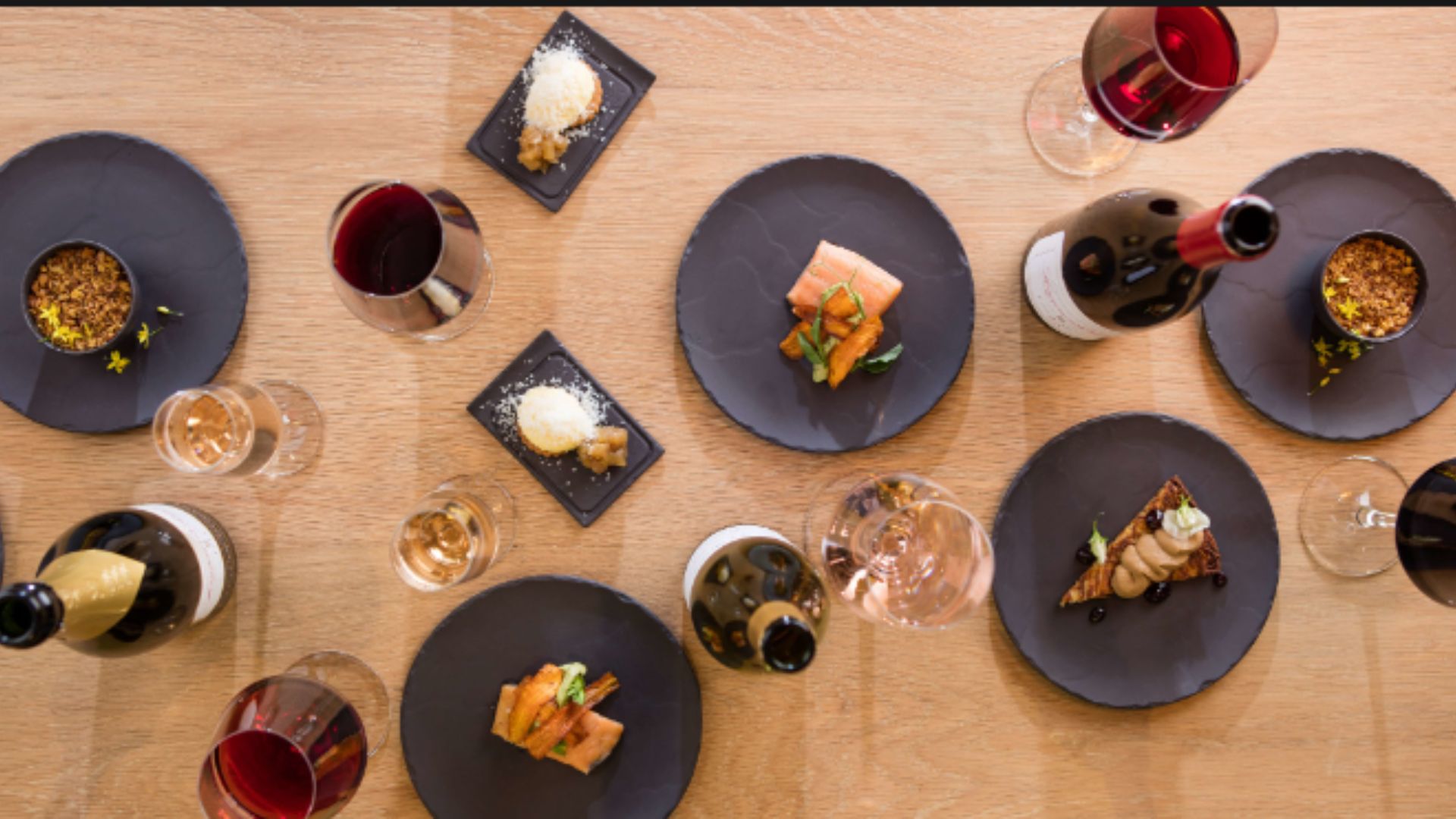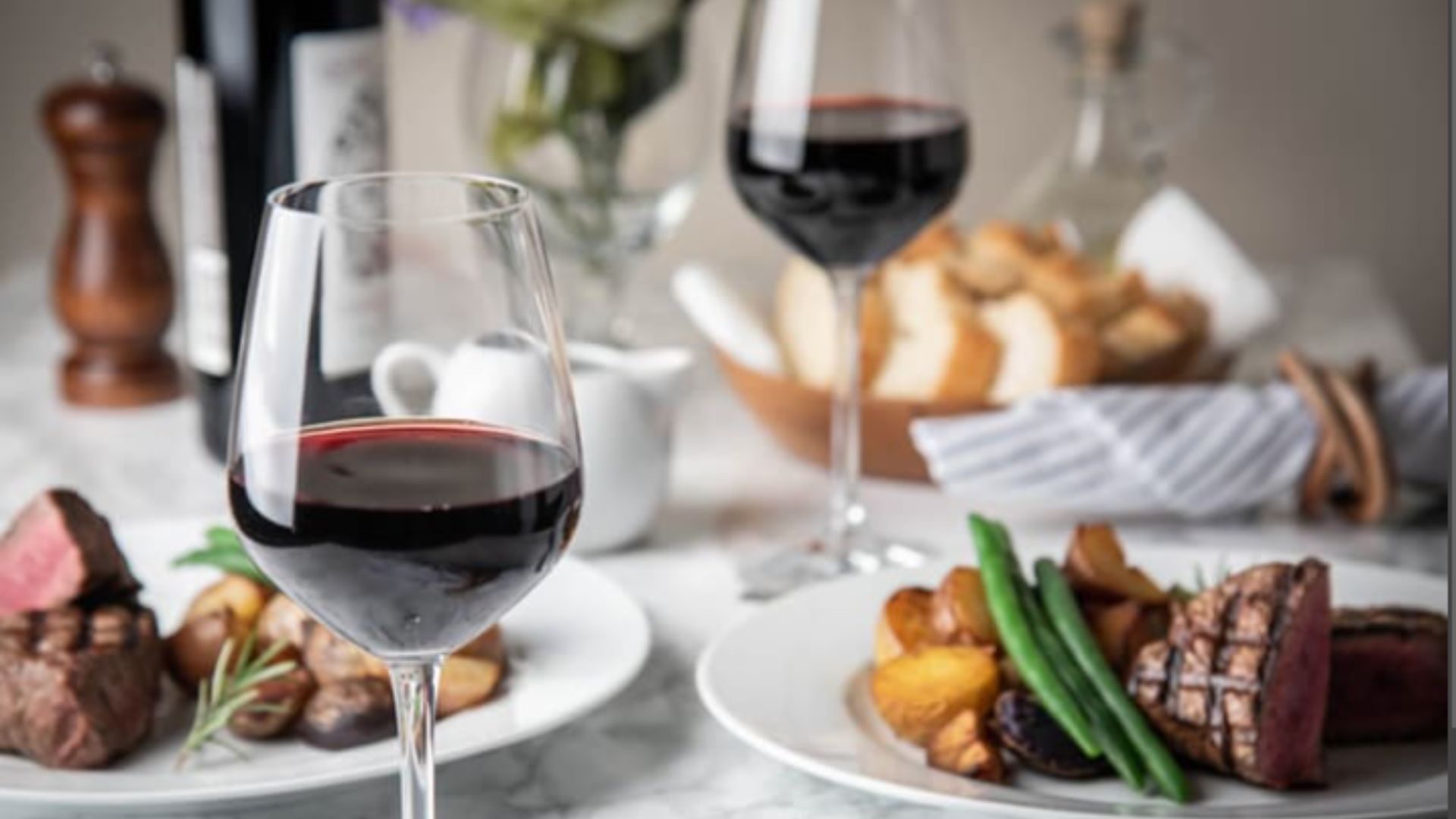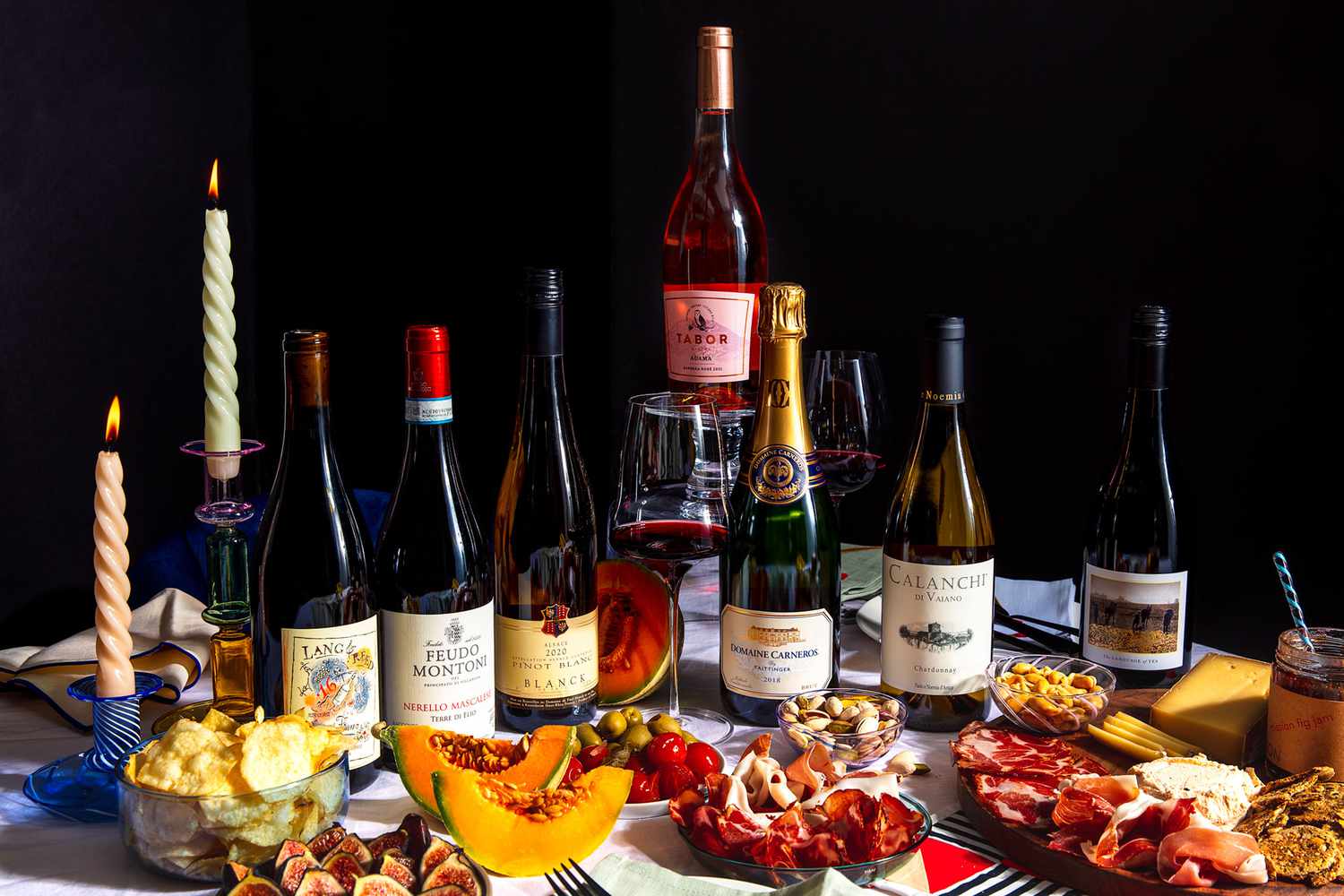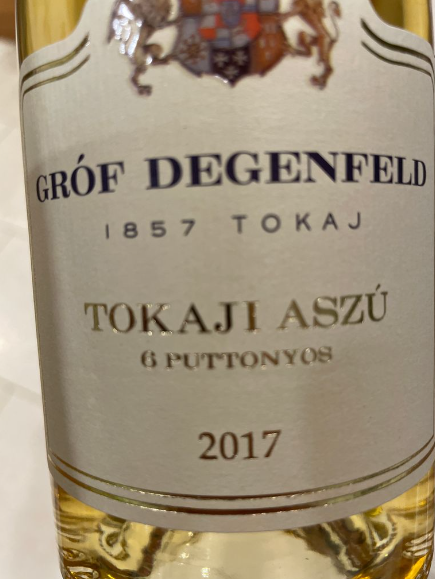Wine and food pairings are an art form, a dance between flavors and textures that can elevate both the wine and the culinary experience. Also, while classic pairings like Chardonnay with chicken and Cabernet Sauvignon with steak hold a certain truth, the world of wine pairings goes far beyond these basic guidelines. This blog post expores deeper into the art of food and wine pairing, exploring various techniques to create truly harmonious and memorable meals.

Finding Harmony on Your Plate
Beyond simply matching grape varietals to specific dishes, consider the weight and texture of the wine in relation to the food. Additionally, a light-bodied wine like Pinot Noir can easily be overpowered by a heavy, rich dish. Also, conversely, a bold and tannic Cabernet Sauvignon might overwhelm the delicate flavors of a light salad.
Here’s how weight and texture come into play:
Light-Bodied Wines
These wines, like Pinot Noir, Sauvignon Blanc, or Gamay, pair well with lighter dishes. In addition, think grilled fish, roasted chicken, or salads with a light vinaigrette.
Medium-Bodied Wines
These wines, such as Merlot, Chardonnay aged in oak, or Rioja, offer a bit more complexity and can handle richer dishes like pasta with creamy sauces, roasted vegetables, or grilled meats.
Full-Bodied Wines
Furthermore, bold and tannic wines like Cabernet Sauvignon, Syrah, or Zinfandel are perfect for robust dishes. Pair them with grilled steaks, braised short ribs, or hearty stews.
Similarly, consider the texture of both the food and the wine. Also, a creamy sauce might pair beautifully with a wine with a bit of texture, like an unoaked Chardonnay. Conversely, a crisp salad might benefit from a wine with a touch of minerality, like a Sauvignon Blanc.
Complementary and Contrasting Flavors
Food and wine pairings are not just about mimicking flavors. Hence, sometimes, contrasting flavors can create a more exciting experience. Therefore, the sweetness of a Riesling wine can beautifully cut through the richness of a creamy pasta dish.
Here are some ways to explore complementary and contrasting flavors:
Sweet with Salty
Sweet wines like Sauternes or late harvest Riesling can complement salty dishes like cured meats or blue cheese.
Spicy with Aromatic
Aromatic white wines like Gewürztraminer or Riesling can stand up to the heat of spicy dishes like Thai curry or Indian curries.
Acidity with Fatty
The acidity in wines like Pinot Grigio or Sauvignon Blanc can help cut through the richness of fatty meats or creamy sauces.
By experimenting with contrasting flavors, you can create a truly dynamic and memorable pairing experience.
Regional Wine Pairings: A Journey of Tradition
Moreover, matching food and wine from the same region can be a delightful way to explore traditional culinary pairings. Therefore, these pairings often have a historical basis, with the wines naturally complementing the flavors of the local cuisine.
Here are some examples of regional wine pairings:
Provence, France
Pair a light and refreshing rosé wine with a classic Nicoise salad.
Piedmont, Italy
Enjoy a full-bodied Barolo with a rich and savory braised beef dish.
Rioja, Spain
Pair a Tempranillo-based Rioja with grilled lamb or chorizo.
Burgundy, France
Savor a creamy Pinot Noir with a dish like coq au vin.
Napa Valley, California
Complement a grilled Cabernet Sauvignon with a juicy steak.
Also, exploring regional pairings allows you to appreciate the traditional harmony between food and wine from specific areas around the world.
Vegetarian and Vegan Wine Pairings
Furthermore, vegetarian and vegan meals can sometimes pose a challenge when it comes to wine pairings. However, with a little creativity, you can create fantastic pairings that complement the flavors of your plant-based dishes.
Here are some tips for vegetarian and vegan wine pairings:
Match Acidity with Richness
For creamy vegetarian dishes like pasta with pesto, choose a wine with good acidity, like a Sauvignon Blanc or Pinot Grigio, to cut through the richness.
Embrace Earthy Flavors
Earthy flavors in mushrooms or roasted vegetables can be complemented by wines like Pinot Noir or Gamay, which often exhibit similar earthy characteristics.
Highlight Spice
Spicy vegetarian dishes pair well with aromatic white wines like Gewürztraminer or Riesling, which can enhance the flavors of the spices.
Consider Rosé
Rosé wines, with their versatility and acidity, can be a fantastic choice for a variety of vegetarian and vegan dishes.
Conclusion
In conclusion, by following these tips and experimenting. However, you can discover delicious wine pairings that enhance your vegetarian and vegan culinary experiences.




